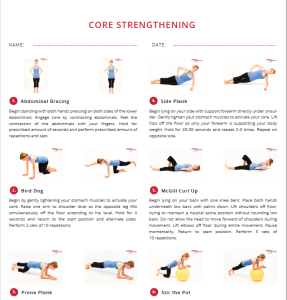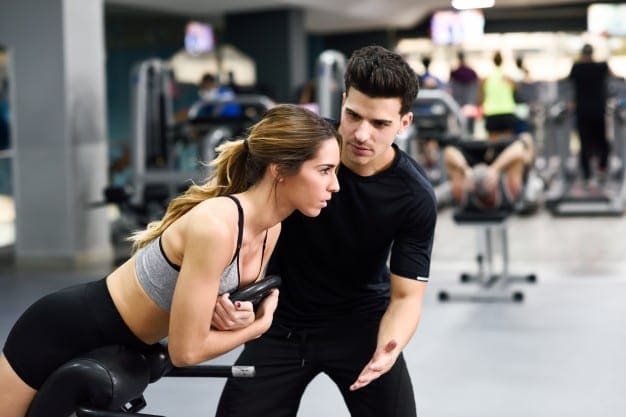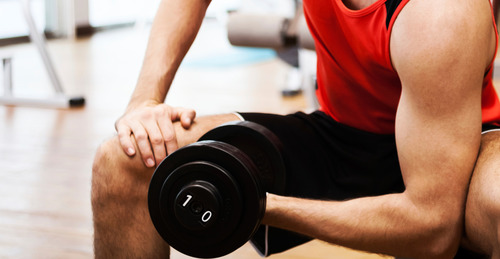
Balancing Muscle Imbalance
Do you have a muscle imbalance? Muscle imbalances occur when one side of opposing muscles is stronger than the other. Many exercise enthusiasts may be getting chronic injuries because of muscle imbalances they don�t know they have. According to renowned physical therapist Dr. Kareem Samhouri, locating and correcting muscle imbalances is essential to good health, and can help cure many of the ailments people encounter daily.
Dr. Kareem is a doctor of Physical Therapy & Kinesiology and owner of Dr. Kareem F Samhouri Fitness LLC. In his practice, Dr. Kareem has rehabilitated and trained a wide variety of patients seeking help for an assortment health issues:
- Improved athletic performance in Olympic and professional athletes
- Joint pain in baby boomers
- Balance issues in older patients
- Coma victims
- Spinal cord injuries
- Rare diseases
- Heart issues
- Lung disease
- Pregnancy
- Stroke victims
- Health issues among children and infants
How To Fix Muscle Imbalance
Dr. Kareem has had many amazing success stories throughout his medical career. One of his favorite patients is a 112 year old women who was wheelchair bound:
�She had very little strength or coordination, but had a great spirit and was willing to work hard. The mission was to reactivate her muscles and nervous system, so we started with simple exercises such as simply lifting one foot and putting it back down.
�Once she was able to do that, we focused on squeezing her knees together and moving them apart. In the beginning she needed assistance, but over time, she was lifting her knees, rotating her shoulders and pulling herself out of her chair with little assistance.
�When she was finally able to lift herself out of the chair without help, she asked me �is there any way I can dance?� The music was turned up and after a little help, she was able to dance for the first time in years!�
Another highlight of Dr. Kareem�s career was helping save the life of a four-day old baby who was born 18 weeks prematurely. This baby was the youngest baby ever born at that hospital and doctors didn�t think this baby was going to survive.
What Dr. Kareem did was to put the baby in different positions:
�Instead of it cringing into fetal position because of all the noises, and sirens, and bells, and whistles going off in the hospital, we opened him up and let his chest breathe a little bit. We moved the baby�s arms in diagonal patterns so he could actually get more breath. We also put a little pressure on the diaphragm so the baby could take deeper breaths, then took the pressure off as the belly would expand and contract.
�All of these factors led towards the baby really just developing a little bit more easily and a little bit faster. Of course, in an infant that�s that young, you really just have to be as gentle as can be. Oftentimes, instead of a hand, it�s just barely a fingertip touch that you�re going to do. When it came to actually moving the baby�s muscles, light, little taps in the areas where the nerve ties into the muscle to say, �Hey, right here.�
�Sure enough, baby got better, grew up totally healthy, and ended up living a healthy life.�
When Dr. Kareem consults with his clients, he shares his philosophy on health: �Your body is designed to heal or decay. From now on, decide on your own health momentum. Regain control while you begin to look and feel years younger.�
Dr. Kareem started on his health journey by simply wanting to help his mother with her health issues, but soon discovered he had health issues of his own. After close scrutiny, he was able to determine that his ailments were due to a muscle imbalance, and they were all alleviated by simply straightening out his posture. He eventually graduated from Pennsylvania State University College of Medicine and became a physical therapist. Shortly thereafter, he added personal training to his resume, opening the world�s first clinic where these practices were taught all under one roof. Dr. Kareem believes the body is meant to move, and the key to good health is getting it to move correctly.
This is the basis of muscle balance therapy, and it is designed to assist the body with the following health issues:
- Alleviating pain
- Faster healing
- Improved mood
- Improved posture
- Increased athleticism
- Greater quality of life
�
Causes of Common Muscle Imbalance
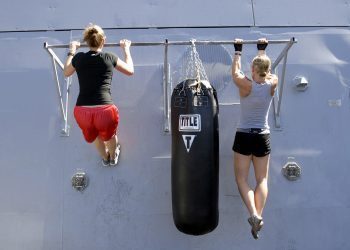
There are many causes of muscle imbalance, following are the most common:
Improper Exercise
When it comes to traditional exercise, many of us tend to exercise in a one or two-dimensional way, which is primarily comprised of movements that are either forwards and/or backwards. For example, the bench press and running are two exercises that are extremely popular, but they can cause muscle imbalances if other complementary exercises are not included in the workout regimen.
In many cases, muscle imbalances mean that the larger muscles are becoming stronger at a faster rate than the smaller muscles. According to Dr. Kareem, the issues caused by muscle imbalance affects more than the disturbed area and may cause a domino effect. For example, if a person has a rotator cuff imbalance, the nerve signal that shuts down the muscle is turned on. When a muscle gets shut down, not only does it stop a person from being able to move the way they want, but it slows down their metabolism as well. This can make a person less effective at many other things, which could eventually affect their mood.
Even as adults, we are meant to play. Our bodies are designed to move in every possible direction. That�s how you would naturally hit all the different muscles. Unfortunately, many of us don�t play. We go to a gym and try to simulate the movements, yet we�re missing different diagonals, rotations, and areas that would be balanced by real life dynamic movement. Repetitive workout routines can create muscle imbalances that wreck our bodies over time.
Moreover, imbalances can lead to injury. For some exercise enthusiasts who are getting chronic injuries, it may be from an underlying muscle imbalance. A person can be big and strong in certain areas, but his smaller stabilizer muscles are not being used. As a result, the body is thrown out of balance, oftentimes creating a functional problem.
Muscle imbalances can affect people of all ages. Kids can experience overuse injuries very quickly, making them less capable of excelling in a sport. In adults of all fitness levels, muscle imbalances can have a negative impact on performance; they�ll be slower, less coordinated, and unable to learn new movements quickly. In older individuals, muscle imbalances can result in decreased coordination, decreased strength and joint pain. Many times, the pain seems to have come out of nowhere or flares up suddenly, but in reality, it was based on a long history of improper movement.
Sedentary Lifestyle

The human body was made to move, not sit at a desk or in front of the television for an extended period of time. Excess sitting can cause muscles to become tight and eventually shorter than they are designed to be. The dangers associated with the sedentary lifestyle are well documented. According to data from the National Center on Health, Physical Activity and Disability (NCHPAD)1
- Sedentary people have the highest rate of heart attacks.
- For every 2 hours a person watches television, their risk of Type 2 diabetes�increases 14%
- Sedentary individuals have an increased risk of breast and colon cancer.
- The risk of stroke is reduced by two-thirds in physically active men and women by 50%.
- Bone loss�increases in physically inactive individuals.
- Walking for sixty minutes daily can reduce a person�s risk of obesity by 24%.
A Weak Core

A strong core helps keeps the muscles and internal organs properly aligned. A weak core can cause slouching, which can lead to poor posture, which could lead to muscle imbalances. These imbalances in the core can lead to health issues such as constipation, acid reflux, and other issues.
Common Muscle Imbalance Areas

Muscle imbalances can happen throughout the body. Some of the most common imbalances include the following:
Neck flexors.�A person�s neck flexors actually end up quite stretched, while their neck extensors become compressed. This often occurs if a person is right handed and they�re always writing with their right hand, typing in a specific way, reaching for a mouse or a stapler, or just rotating their spine in a very specific pattern and shoulder in the same manner over and over again.
Tight hip flexors. Tight hip flexors are caused by sitting for extended periods of time. The human body was not designed to sit as long and as often as we do, and the result is the hip flexors become shortened. This in turn causes the pelvis to rotate or tilt downward, causing the glutes to become lengthened and weak. This will put more pressure on the hamstrings, increasing the risk of hamstring tears, strains and pulls.
Weak upper back. Another common problem is forward shoulder posture, or �upper crossed syndrome.� This is common among individuals who spend long hours in front of a computer. The head goes forward, and as people make that adjustment, chin comes up, which causes an additional strain. Another cause of the upper back imbalance is performing �pushing� exercises such as pushups and bench presses, but not doing any �pulling� exercises for the back such as bent over rows or pulldowns.
As a result of these imbalances, the trapezius and rhomboid muscles become lengthened and weak, while the pectoral muscles and anterior deltoids become tight.
Tight calves. Women who wear high heels increase their probability of having tight calves. The soleus, gastrocnemius, peroneal, and other muscles in the lower leg become tight. This muscle imbalance can lead to different foot, heel, and ankle problems such as plantar fasciitis and fallen arches.
Tight Piriformis. The piriformis is muscle in the glutes which is also part of the external rotator in the hip. A tight piriformis occurs more often in men than women because men tend to sit with their legs open more often than women. Individuals with a tight piriformis often have knee problems, while others may experience problems with sciatica, which is shooting pain from the glutes to the back of the legs.
Tight abductors. Tight abductors usually occur in women because they tend to sit with their legs crossed. If a person has tight abductors, the femur may become internally rotated, which increases the probability of knee pain.
Muscle imbalance can occur in many different ways. Not only is It important to be aware of their causes, but it�s also important to know the various ways they can harm the body.
Dangers of Muscle Imbalance

Many people are unaware how muscle imbalances can affect their overall health. Oftentimes, I would explain to my clients how �structure affects function.� I would show them an x-ray so they can see how an imbalance could erode their discs early and cause injury. However, it was a challenge for me to get them to understand how that affects their immune system.
Dr. Kareem explains the dangers of muscle imbalance by looking at the problem from both an Eastern medicine philosophy and Western medicine philosophy. He feels both viewpoints are valid, even though they are based on different rationales.
For example, in Western medicine, it�s understood that if we don�t take care of our bodies and keep them in proper alignment, they will begin to deteriorate and become weak very quickly. Pain signals will take over instead of muscle signals and contractions. We�ll begin to lose coordination, which ultimately, means we�ll lose our mobility and become less active. We�ll be less motivated to eat right and begin to feel helpless and assume the fetal position.
When we�re stressed, we curl up in the fetal position, and that�s a position of self-defeat. This position is a sign of anxiety, depression, and tension throughout the entire body. As we begin to look at illness from this perspective, we start to branch over to the Eastern medicine philosophy: how does this affect quality of life?
As we delve deeper into the Eastern medicine philosophy, we must consider the importance of the central nervous system and cerebral spinal fluid (CSF) and how it relates to muscle balancing: If you have a block in CSF flow, and it gets disrupted (through your brain, through your spinal cord, and back up,) it will change the way your entire body communicates.
Dr. Kareem elaborates further: �If there�s something more critical going on in your body right now, like for example, your nervous system�s compromised because CSF flow is blocked, then it doesn�t care if you want to lose weight. It doesn�t care if you have a cut or a laceration on your skin. It�s not going to heal it as well. It certainly doesn�t care if you have wrinkles that you want to get rid of or if your energy level isn�t what you want it to be. You got to fix the root cause, the number one priority in your body, and a domino effect takes place.
�That, perhaps, linked with oral health are two of the most important foundational things you can do to improve your health, period. If you�re not taking good care of your mouth, and you�re not taking good care of the messaging system for your entire body, those are primitive areas of your body that change everything else. The body�s organized in a way where it�s going to work from the highest priority backwards.�
When it comes to health, many people are focused on the wrong things. People are concerned more about the wrinkles� and the weight loss so energy and focus goes there. They don�t realize that root canals, cavitation, and amalgam fillings�in their mouths are making them toxic. It�s important for people to understand these things can cause inflammation, accelerated aging, and other issues. Toxins do this by getting into the cells the nervous system, and ultimately the anterior head. They�re not aware how their spinal cord is stretched and interfering with their nervous system. Instead of focusing on issues like the skin and weight loss, it�s more important to look upstream�and get to the root cause of our health issues.
Dr. Kareem believes that it is important to work on the number one system first, which is the endocrine system. When the endocrine system is under stress, hormones are more important than going on a particular diet. For example, if your pelvis is out of position and it�s properly realigned, you might uncover a six-pack you didn�t know you had:
�This is one of my biggest lessons and one of my earliest personal training finds. This was an introduction for me to muscle balancing. You see, there was this girl named Lindsey, and she worked as hard as anybody could work. She wasn�t anorexic, but she was borderline at that point where she was just doing everything she possibly could in the gym. She was eating correctly, so she wasn�t really skimming off food, but she just couldn�t get that final six-pack. She just wanted a little bit of definition. She always had the four at the top of the abs, but nothing at the bottom.
�Finally, I ended up doing a postural assessment on her. I took a peek. You know what? We just needed to tip her pelvis backwards a little bit. When we tipped her pelvis backwards a little bit, lo and behold, all those folds went away. Her love handles weren�t actually there. There was no extra body fat on her body preventing her from having the body she wanted. She just needed to be in a slightly different position.
�Now, the coolest thing is not only did she end up getting the body that she wanted, but she starting moving so quickly, all her results accelerated. It was months of work to get to this point, where then all of a sudden, in the next 30 days, she hit every single one of her goals. Truth was, it only took two weeks to tip her pelvis back into position and a few simple exercises that anybody can do at home with just their body weight alone.�
Do You Have Muscle Imbalances?

Our subconscious mind knows when the body�s out of position. If we turned the lights off in the room, you know your arms are behind you. You don�t have to look over to see that. That�s because there�s these little mechanoreceptors in every muscle telling your brain, �We�re over here.�
Same with when the head is forward. The mechanoreceptors are firing, letting the brain knows it�s out of position. When something is out of position, it sucks the energy right out of the cell. This �energy drain� is disruptive to your central nervous system and, if uncorrected, your entire body over time.
The subconscious mind knows this, but the average person is unaware the imbalance is occurring. They don�t know their head is tilted forward or their hips are slightly misaligned. They look in the mirror and think they are ok. I remember when I did this type of work saying, �Look at your low shoulder,� and they would look at themselves and say, �What low shoulder?� The point is this imbalance is the norm, but it�s can be a huge performance zapper.
If a person has had muscle imbalance for a period of time, one or both of these things can happen:
- Our bodies are going to balance themselves out. If your head is tilted one way, you�ll subconsciously raise your shoulder a little bit to balance.
- A person may opt to take medication to try relieve symptoms of discomfort. However, medication doesn�t get to the root cause of the issue, which is the muscle imbalance. In reality, a slight adjustment may be all that is needed.
Checking for Muscle Imbalances

You can check for muscle imbalances in the comfort of your own home:
Take a string and hang it from the ceiling, or have someone hold it for you. With the string, divide your body between right and left sides. Take a picture of yourself and compare your two sides.
1. When you look closely at the picture, look for the following signs of muscle imbalance:
- Is one shoulder is up a little bit more than the other?
- Is your side bent a little bit?
- Is your head slightly tilted?
- Is one hip raised little higher than the other?
- Do you have a little bit more of a love handle on one side?
- Is one hip is tighter than the other?
2. Take a second picture with the string dividing the body from front to back by taking it with the string at your side.
- Is your head forward?
- Is your chin tipped up?
- Is one shoulder a little bit higher or rounder than the other one?
- Is your pelvis tipped so that your lower back is arched a bit, and your belly is sticking out?
These imbalances can affect a person in many different ways. For example, if you�re a runner or athlete you may ask yourself �why can�t I get my hamstrings stronger?� or �why can�t I get faster?� This may be a case where you�re not getting the signal because your back�s arched, and you�re tipped out of position. Identifying the imbalances with a concrete image you can reference is an excellent place to begin looking for clues.
Correcting Muscle Imbalances
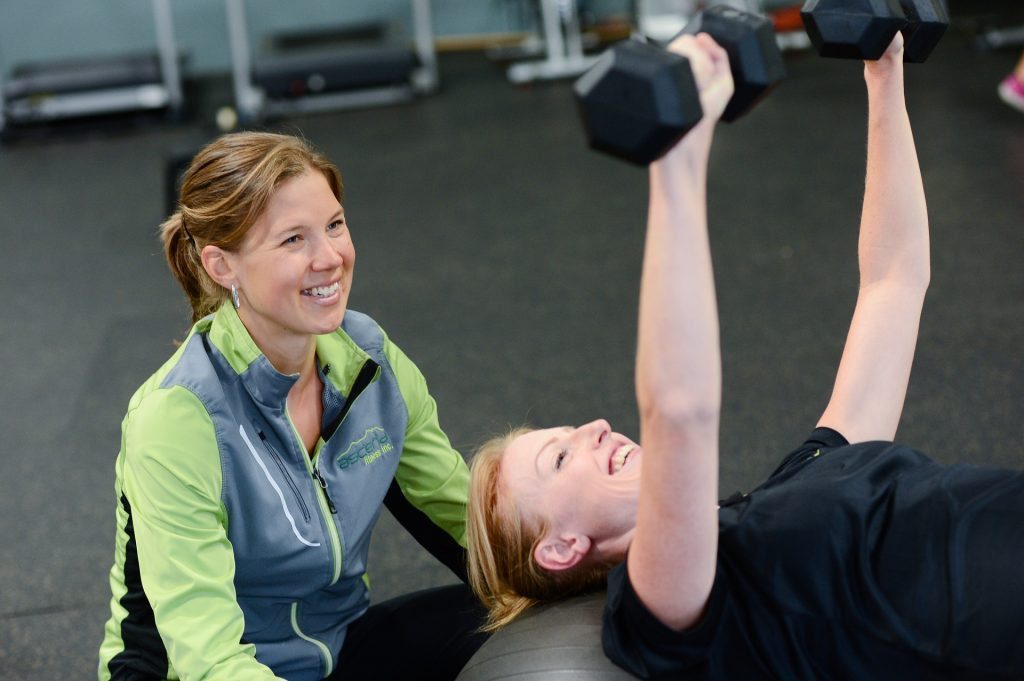
Once the muscle imbalance is found, steps can be taken to correct it. While many people have the same types of muscle imbalances, Dr. Kareem stresses that it�s also important to focus on personalized health. This simply means to tailor muscle balancing techniques based on your symmetry.
�A lot of people say, �My right bicep is stronger than my left. Should I just lift heavier on my left and try and make up for it?� No. You actually want to back down. You want to cater to the more limited side of your body. Symmetry comes first. The fastest results come from slowing down to balance your body�s strength, and then everything accelerates from there. You want to back off from your weights on both arms to match the strength of your left, and then you would increase.�
�The same thing reflects ability and mobility in tissue release. If you can raise both arms up into the air, but one of your shoulders is hiking up a little bit, don�t go quite as far. Cater to the more limited side just before your shoulder hikes up, and come back. Work on your mobility just here, opening up your chest, increasing your ability to take a deep breath through your diaphragm. Then what happens is before you know it, even just a few reps in oftentimes, you�ll start to get a little bit further. If you just keep pushing past that point of resistance, sure, the left can keep going as far as it wants, but the right�s never going to get any better. That just results in more twisting through your body.�
Dr. Kareem has devised a short, five-minute program that uses a diagonal pattern that brings the body back into alignment naturally:
1. Free Squat
- Stand hip width apart or slightly wider
- Exhale and slowly lower, looking straight ahead
- Inhale and rise back to starting position
- Repeat for 50 seconds
- Notes: Keep feet firmly planted. Arms can be crossed in front of body, fingertips at your ears, or held out (as shown.)
2. Superset pushup
- Start with hands close together
- Exhale and lower
- Inhale and rise to starting position
- Move hands out to shoulder width apart
- Exhale and lower
- Inhale and rise to starting position
- Move arms out passed shoulder width apart
- Exhale and lower
- Inhale and rise to start position
- This is one rep.
- Repeat for 50 seconds
- Notes: Pushups can be modified by doing them on your knees.
3. Fast Bridges
- Lay on back with your feet planted onto the ground
- Keep arms on your sides for stability
- Raise hips toward the ceiling and lower quickly
- Repeat for 50 seconds
- Notes: Keep upper back planted on floor. Make sure to raise both hips evenly. Do not tilt the body.
4. Middle Trap (Bird Exercise)
- Lower body into squat position
- Feet shoulder width apart
- Dig heels into floor
- Tuck your chin
- Extend arms out to sides
- Lower arms to floor
- Raise arms parallel to sides
- Lower
- Repeat for 50 seconds
- Notes: Move shoulder, not the arms.
5. Rotational Plank
- Start in pushup position
- Keep core tight
- Exhale and slowly roll body upwards on your left side
- Inhale and slowly lower body back to pushup starting position
- Repeat for 50 seconds
- Notes: Keep core tight at all times. Body should be rolling back and forward in one fluid motion. Keep arms in plank positions at all times. Exercise can also be done on forearms.
For more information on these exercises, go to Dr. Kareem�s website.
This exercise program is designed to stimulate the front of body, the back of body, the lower body, and the upper body. This excites all of the nerves in the body and involves the smaller muscles. As a person performs these exercises, his body will quickly learn how to challenge the smaller muscles as well.
The body will begin to balance itself out by recruiting the big muscles to send the signal to the smaller ones. The idea here is to �train a nerve, not a muscle,� and that nerve starts in your head.
Dr. Kareem recommends performing these exercises every day or every other day. 50 seconds of work and 10 seconds of rest before you transition to the next exercise. Everything is one minute, and it�s a total of five minutes every other day.
A popular misconception is we must do a certain amount of weight or reps for an exercise to be effective. Popular opinion is we are to do three sets of 10, three sets of 15, five sets, etc. In actuality, there is no solid evidence saying that that has to be the number instead of three reps or instead of six. The reality is your body just wants the cue in the right direction and let it take over. Instead of overanalyzing, we should just let nature take its course. We can self-optimize and trigger our small cues to say, �hey, body, I want to do this now.� When we send that signal for the first time, the body will understand, and it�ll start to superimpose it onto our lives and our body.
The Power of Visualization

An important part of this exercise is visualization. When a person thinks about a movement, the body begins to respond to that movement. Elite athletes use this method to prepare for a race or athletic event. They visualize the entire race before it happens.
It�s important to watch somebody else demonstrate properly first, then picture yourself doing the same move identically. This is the fastest way to learn a movement, and your body will begin to subconsciously learn how to perform the movement as well. Visualization techniques are very effective, and have shown to increase contractile strength by 30%.
On average, it takes about six weeks for a new exercise or activity to become second nature. A good example is getting out of a chair: the average person just gets up and walks without thinking about it, but in the beginning it may have taken effort. This is often the case with babies first learning to walk or people who are going through rehabilitation. They have to learn certain things all over again until they can do them without thinking about them.
Dealing with Chronic Injuries

When dealing with chronic injuries, Dr. Kareem suggests a person back off from their current activities or lower the intensity to ensure they�re not overtraining. It�s time to allow the body to learn something new, and that can be accomplished by performing the five muscle balance exercises described above. Here are a few tips from Dr. Kareem:
Weekend warrior. �If you�re not moving at all during the week, it may be helpful to decrease the intensity on the weekend warrior activities. If you�ve been playing two hours of basketball a day, cut it down to one just for a few weeks until you get the postural piece right.�
Elite athlete. �If you�re an elite athlete, maybe you�ll cut out a little bit of the time that you�re spending in the gym weight training. What you want to do is just use these five exercises initially, and then replace them over time. Use these five exercises. Do your workout, so you�re still playing basketball, or you�ll still play your sport. Within a few weeks, you�ll notice that your posture�s improved. Do that plumb line test, and you�ll see, �Where do I stand?�
Older individuals. �If you�re an older adult, avoiding falls is going to be the number one predictor of your longevity and quality of life. Take the same five minutes and use it as your five-minute mini circuit, or five-minute circuit in anything that you�re doing to enhance your health.�
�Once you know your body�s moving the way you envisioned, you can replace the five exercises with something different and something more powerful for you. It can be coordination training, speed training, balance reaction training, etc.�
In addition to athletics, doing muscle balancing exercises can help alleviate many other health conditions as well.
Additional Benefits of Muscle Balancing
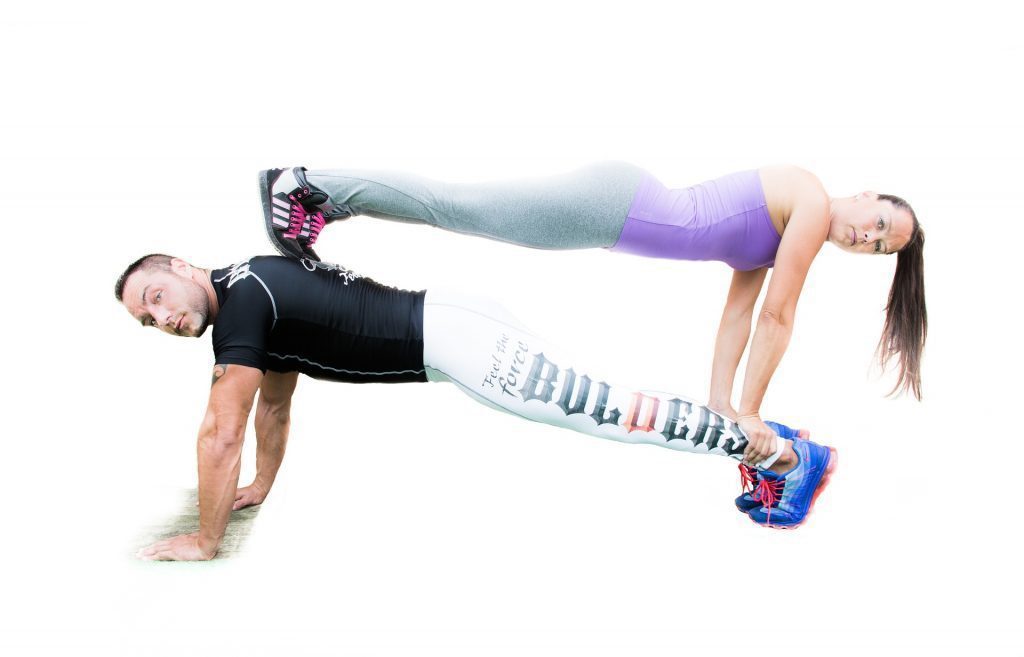 Muscle balancing therapy has shown to help many conditions including the following:
Muscle balancing therapy has shown to help many conditions including the following:
- Arthritis
- Speed
- Chronic pain
- Chronic Fatigue Syndrome
Muscle balancing exercises are designed to improve health on a cellular level, giving attention to cells in the body that need them most.
Improved circulation. Muscle balancing helps the circulatory system become more efficient. This is important because red blood cells carry oxygen and the oxygen mitochondria needed to create energy production for every cell in the body.
Strengthened nervous system. Muscle balancing teaches the body to contract a muscle at the right time and in the right sequence by targeting our nerves instead of our muscles. The body then creates a �pump effect� that allows the deoxygenated blood stuck in your ankles and fingertips to find its way back to your heart efficiently and easily. This allows the heart to focus on getting rich, oxygenated blood back to the rest of your body.
Muscle Balancing with Massage

Dr. Kareem believes in myofascial release, which is a method of applying gentle pressure to eliminate pain and restore motion. When a person gets a massage and they experience a �good hurt,� that can indicate they either have a muscle imbalance or a knot in the muscle.
In addition to the five exercises, a tennis ball, foam roller, or massage are all effective ways to help remove knots and eliminate muscle imbalance. By using these methods, you�re taking something that functions almost like scar tissue, and giving it more slack. When you give your body more slack, you give it more forgiveness. Ultimately, that leads to a more effective, younger-feeling body.
Muscle imbalances can affect a person in many different ways. By eliminating imbalances, a person can see quality of life improve physically, mentally and spiritually. However, fixing muscle imbalance is one piece of the puzzle to realizing optimal health. I encourage you to address any imbalance, but to get real and lasting results a Multi-Therapeutic Approach must be implemented. My MTA involves diet change and variation, proper exercise, fasting, True Cellular Detox�, emotional detox, and more. Combining multiple proven health strategies is the most surefire way I know to fix cellular dysfunction and enjoy your best life.






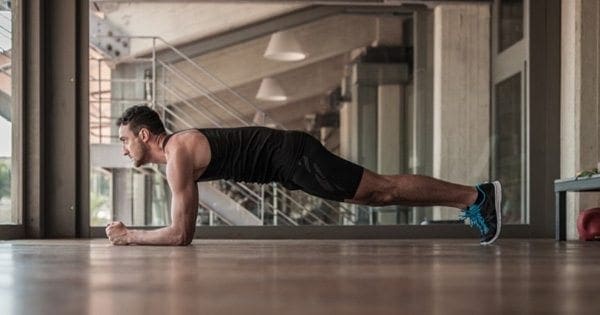
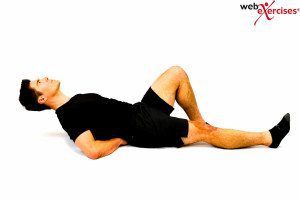 Curl-ups train the rectus abdominus, the long abdominal muscle that runs vertically from your breastbone all the way down on both sides of your bellybutton.
Curl-ups train the rectus abdominus, the long abdominal muscle that runs vertically from your breastbone all the way down on both sides of your bellybutton.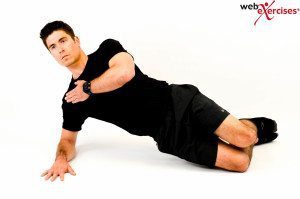 The side bridge, also called the side plank, trains the quadratus lumborum, lateral obliques, and transverse abdominus muscles, all local muscles that help stabilize the�spine.
The side bridge, also called the side plank, trains the quadratus lumborum, lateral obliques, and transverse abdominus muscles, all local muscles that help stabilize the�spine.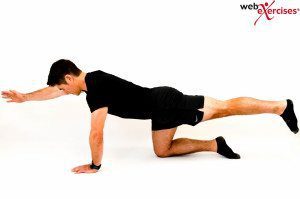 This exercise is great for training the back extensors, including the longissimus, iliocostalis and multifidii.
This exercise is great for training the back extensors, including the longissimus, iliocostalis and multifidii.